Decisions over allocating resources to various end-uses are often driven by economics and the profit motive. However, viewed under the broader lens of opportunity costs, other considerations include food security, environmental impacts, differing food cultures, and debates around whether to prioritise efficiency or resilience. Whilst these considerations are often trumped by profit, they are still important factors in the feed-food competition debate.
Food security
A major concern around feed-food competition is its influence on aspects of food security, including the quantity of human-edible food produced, its nutritional content, and food prices.
Quantity of food produced
Feedlot ruminant systems consume over four times as much human-edible protein as they produce. Thus, using human-edible crops as feed arguably undermines food security because more food would be available if crops were eaten directly by people rather than being used as feed. Cassidy et al. estimate that if all edible crops were consumed directly by humans, global calorie availability would increase by 70% – enough to feed another 4 billion people. Moreover, different animals have different Feed Conversion Ratios and require different feed compositions to thrive. For example, redirecting human-edible feed from all meat production to feed-based egg and dairy production would arguably increase global calorie availability by 14% (feeding another 815 million people).
However, some argue that feeding some human-edible crops to livestock ‘leverages’ human-inedible feed consumption and makes net positive contributions to food availability. Van Zanten et al. conclude that dairy cows fed a mixture of human-edible and human-inedible feed (e.g., grass from marginal lands), produce more human-edible protein than they consume. For further discussion of livestock production efficiency and ‘leveraging’ see What is environmental efficiency? And is it sustainable? and Lean, green, mean, obscene...? What is efficiency? And is it sustainable?
Nutrient content
In addition to food quantity, achieving food security requires attention to nutritional value. Nutrient profiling models (algorithms for nutrient profiling, also known as nutrient density indices) consider levels of various nutrients in foods to assess their nutritional value. Complex models also account for the wider dietary contexts within which foods are eaten, and factors like their carbon footprint. The models are often used to argue for animal products on the grounds that they are dense in bioavailable essential micronutrients which can combat growing concerns over micronutrient deficiencies (see What is malnutrition?) and maintain food security (particularly when obtaining adequate nutrition from plant-source foods is difficult). However, some still question how much (if any) animal source food is needed in human diets (see our Letterbox Series 4: Vegan or flexitarian – which diet is healthier?).
Food prices
Feed-food competition also impacts interactions between food prices and food security. Crops are allocated towards feed or food according to changing demand, which then influences food prices. Arguably, using human-edible crops as animal feed may increase demand for those crops. This potentially undermines food security by increasing their price and excluding poorer people from staple crops often linked to feed-food competition (like grains).
However, Manceron et al. find that feed-food competition has decreased over the last few decades: the share of cropland producing animal feed decreased from roughly 45-50% in the 1970s to 35-39% in 2009. This suggests that feeding crops to livestock is only possible due to surplus created by improved crop productivity. Furthermore, the argument that using human-edible crops as feed reduces food available is not necessarily true – reduced demand for animal feed might lower production of those crops meaning they are no longer available for human consumption.
Environmental impacts
Opportunity costs also apply to wider environmental impacts of feed-food competition (biodiversity loss, climate change, etc). Di Paola et al. compared protein production from plants and crop-fed livestock. Plant protein production used 2.4-33 times less land and water and produced 2.4-240 times fewer greenhouse gas emissions. Here, crop-fed livestock appears environmentally inefficient suggesting that plant-based foods are preferable to crop-fed animal products.
Theoretically, habitat destruction and carbon emissions from expanding farmland into natural ecosystems would decrease if human-edible crops were fed to people rather than livestock. However, shifting diets from consuming livestock reared in intensive grain-fed systems to those in grazing systems may offset positive changes. This could result in more land than necessary being used to produce similar amounts of animal products (see What is the land sparing-sharing continuum?) in the absence of consumption shifts. However, regenerative grazing proponents argue grazing systems maximise carbon sequestration, biodiversity and soil health compared to intensive agriculture. In contrast, organisations like the Vegan Organic Network, suggest that livestock is unnecessary in regenerative agriculture.
Societal value
Feed-food competition also relates to discussions about what we need versus what we want. Luxury crops (e.g., coffee or wine-making grapes) can be seen to use land/resources that could otherwise produce more socially ‘worthwhile’ outcomes like conservation or more nutritious foods. Some commercial crops – such as alcohol crops and sugar – are also detrimental to health. Crop quality is another consideration. For example, UK feed-grade wheat has a lower protein/gluten content than food-grade wheat used to make the light, airy bread valued by consumers. The perceived value of different crops will depend on personal values and societal norms (dietary preferences, the value of health, pleasure, livelihoods, etc) as well as economic considerations.
Free market advocates argue that the mechanism of price automatically optimises food supply to maximise societal value (defined by individual purchasing choices) revealing peoples’ preferences. However, critics argue (for example) that richer people often disproportionately influence what is produced, potentially causing free markets to prioritise expensive luxuries (such as grain-fed meat often favoured by higher-income countries) over necessities for poorer people.
Efficiency vs resilience
Using edible crops as livestock feed may be inefficient in terms of people nourished per hectare or unit of environmental impact. However, it arguably increases the food system resilience to economic or ecological shocks by maintaining crop production above minimum levels needed to feed people. See also “Food waste as a buffer against food insecurity” in What is food loss and food waste?
Proponents of regenerative or agroecological systems argue that reducing feed-food competition does not eliminate the perceived harmful effects of intensive cropping (such as fossil fuel reliance). Conversely, increasing crop yields (e.g., via sustainable intensification) could arguably improve food system resilience by creating more biomass for all end-uses, thus reducing feed-food competition.
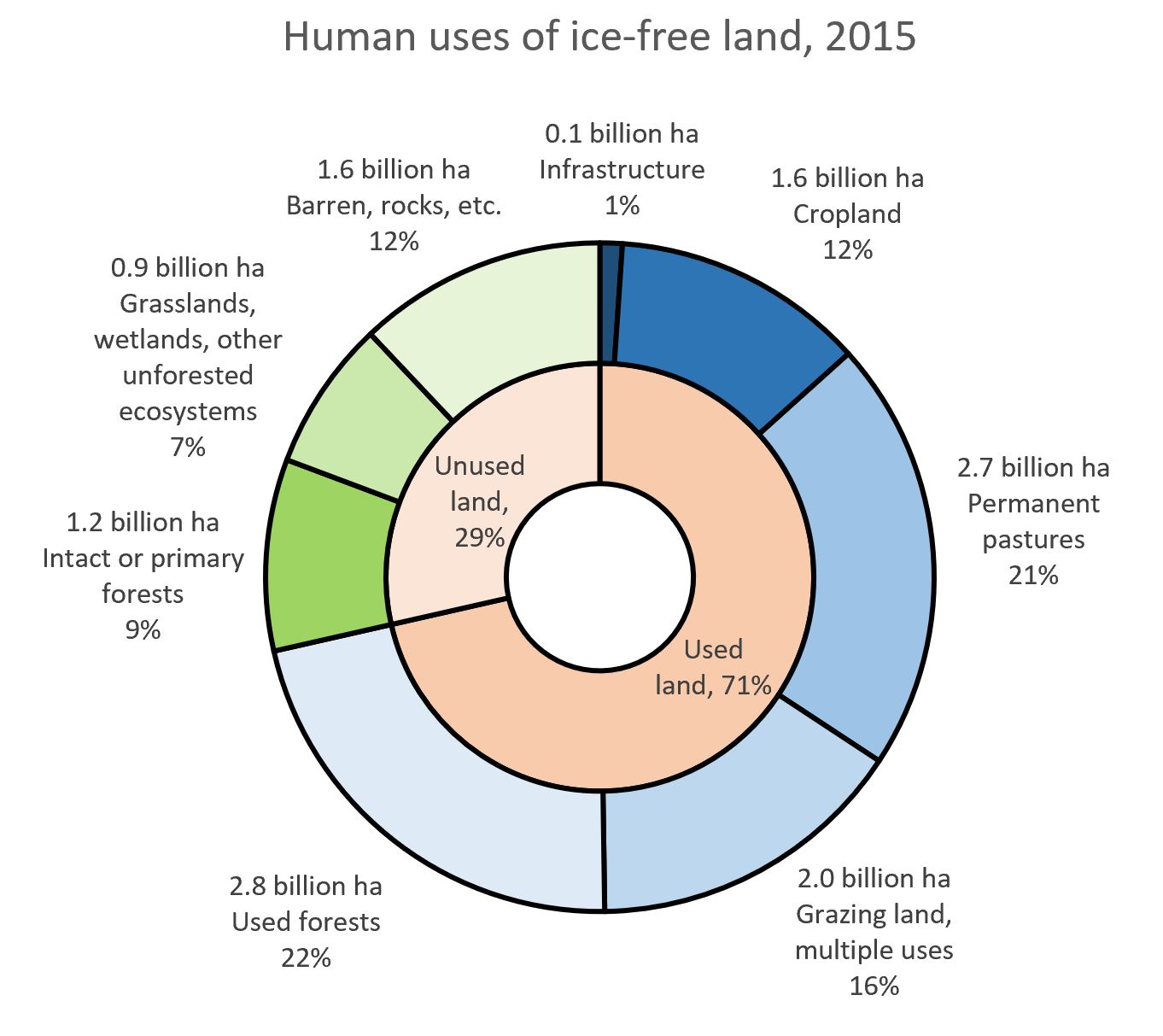
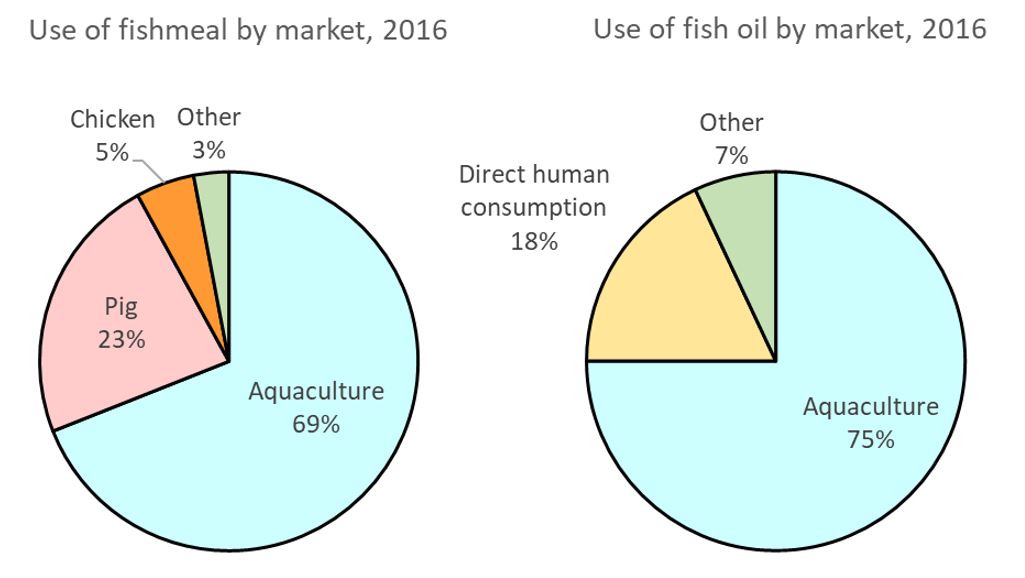

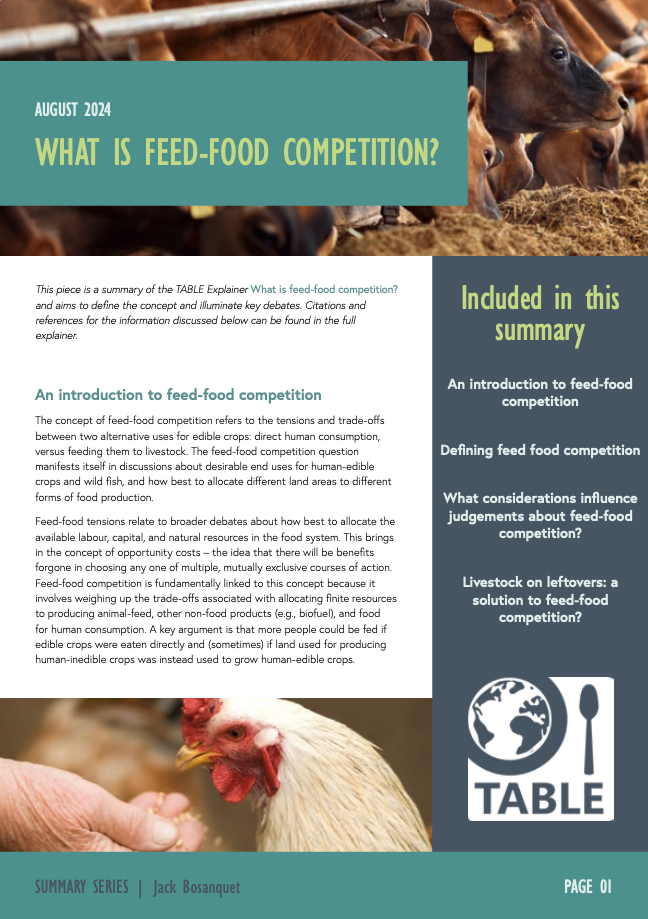
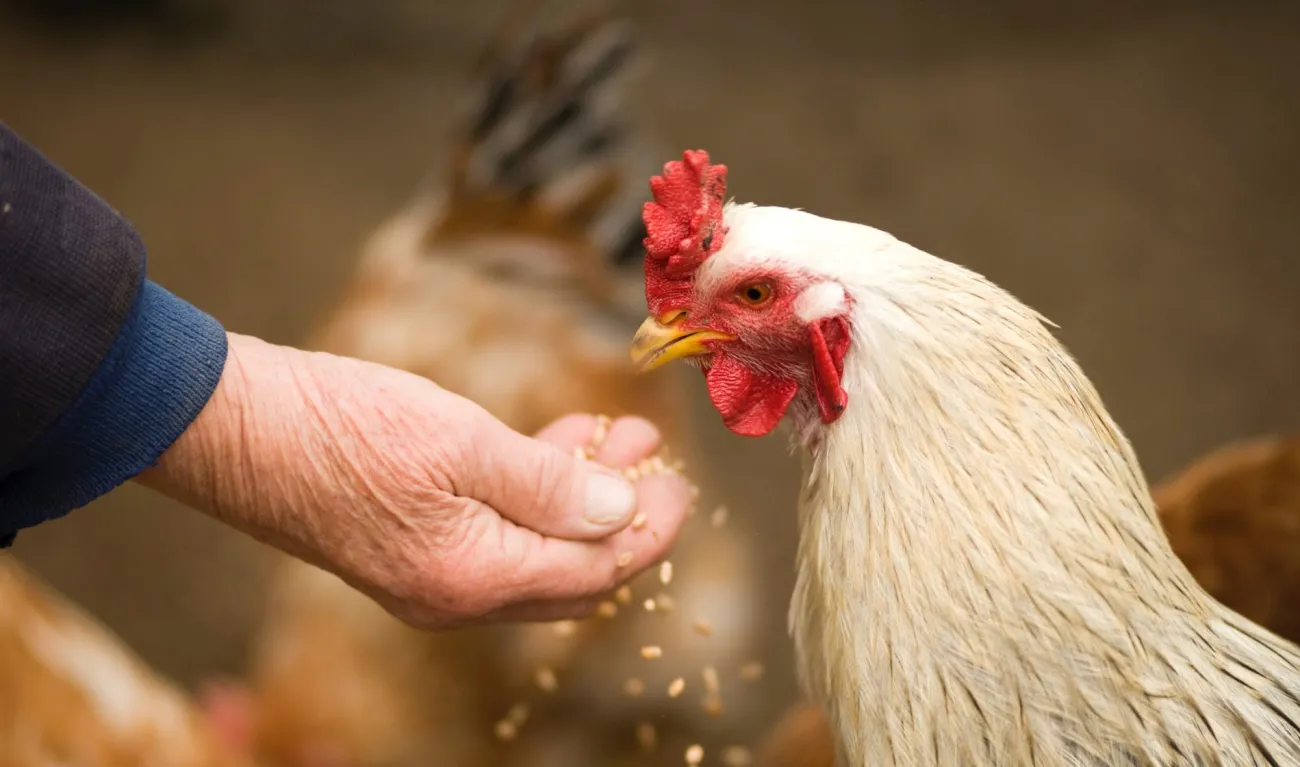

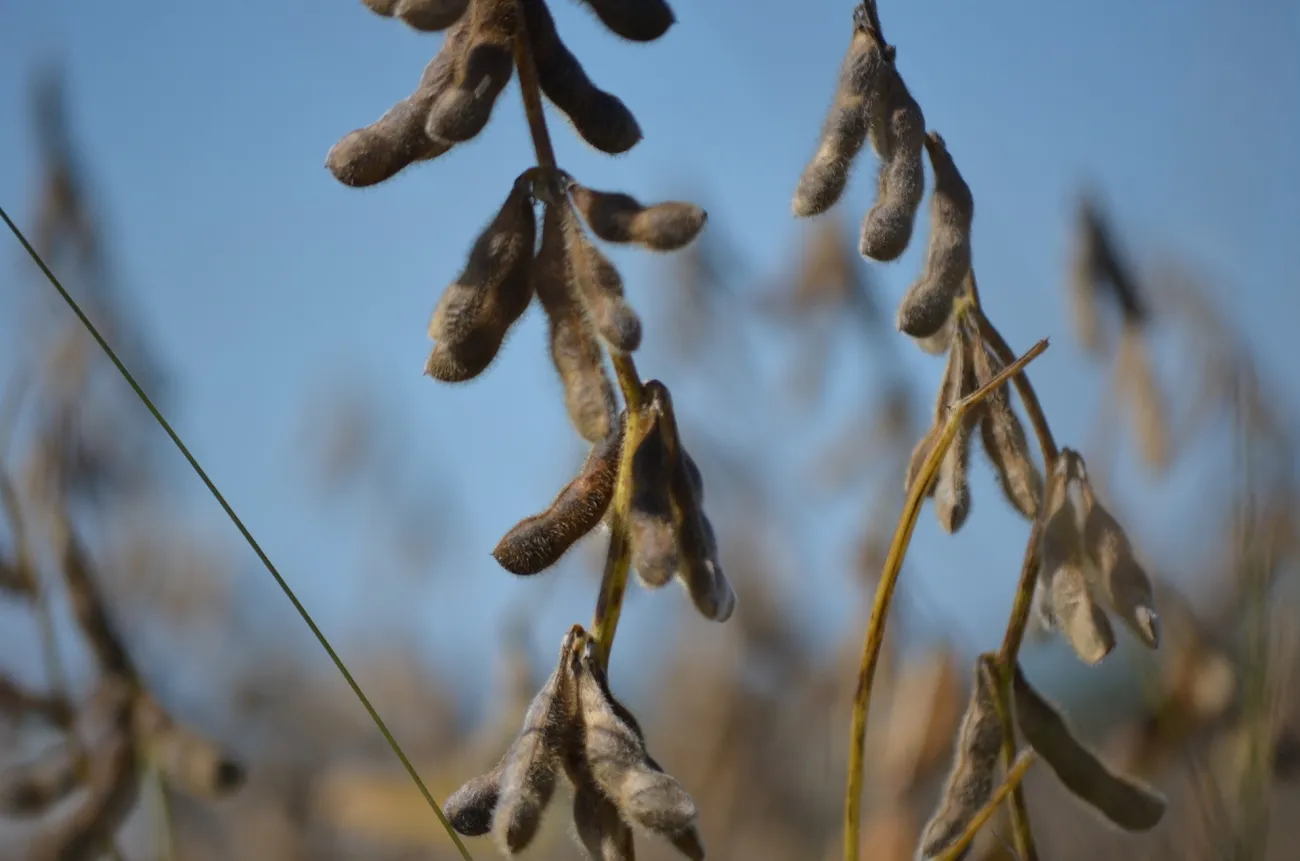




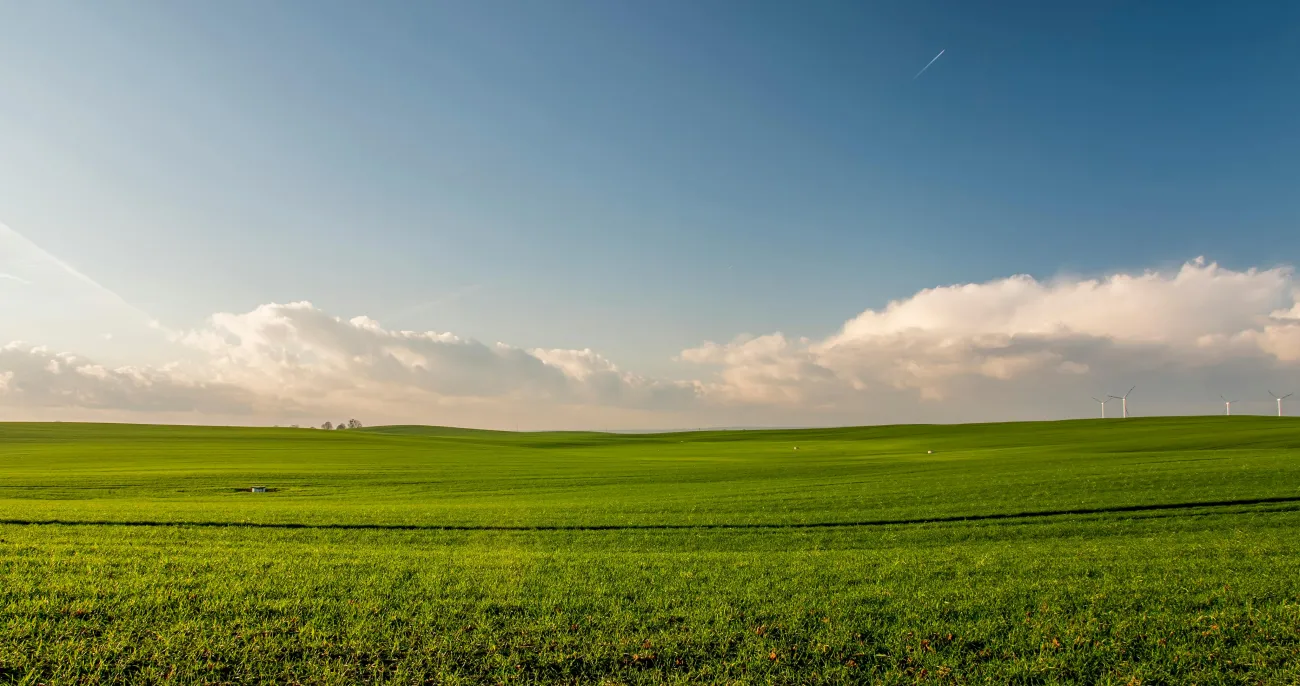
Comments (0)